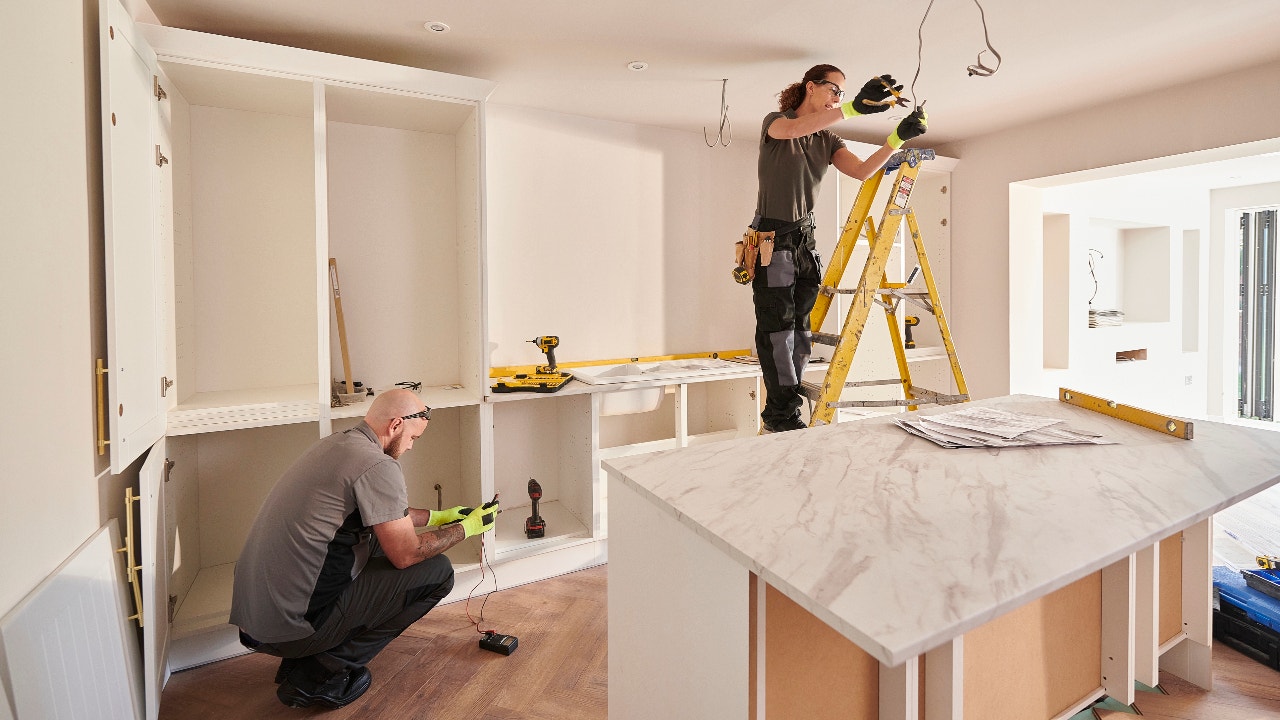Introduction: A Critical Decision for Homeowners
Every homeowner faces the question: Should I tackle this project myself or hire a professional?
With DIY tutorials widely available and tools more affordable than ever, many homeowners in 2025 are eager to save money and gain hands-on experience. But while some projects are safe and cost-effective to do yourself, others carry serious risks that can void warranties, reduce insurance coverage, or even create safety hazards.
This guide breaks down the costs, benefits, and risks of DIY versus hiring contractors for common home upgrades, from roofing and plumbing to kitchen remodels.
What Does DIY vs Contractor Choice Mean? (Quick Answer)
DIY vs hiring contractors refers to deciding whether to complete home improvement projects yourself or employ licensed professionals.
- DIY Projects: Best for cosmetic or small-scale upgrades where mistakes are low risk.
- Contractor Projects: Necessary for structural, electrical, plumbing, or code-regulated work.
Why It Matters for Homeowners in 2025
This decision directly impacts:
- Safety: Professional contractors reduce risks of injury and structural damage.
- Insurance: Many insurers won’t cover damage caused by unlicensed DIY work.
- Cost Savings: DIY saves labor costs but can lead to expensive mistakes.
- Time & Convenience: Contractors complete projects faster with proper tools.
- Resale Value: Professional work is more attractive to buyers and appraisers.
Common Home Projects: DIY vs Contractor
| Project | Average DIY Cost | Average Contractor Cost | DIY Feasibility | Risks | Insurance Impact |
| Painting & Flooring | $500–$2,000 | $2,000–$5,000 | High | Minimal | Covered |
| Minor Landscaping | $200–$1,000 | $1,500–$3,000 | High | Minimal | Covered |
| Kitchen Remodel | $5,000–$15,000 | $30,000–$60,000 | Low | Plumbing & electrical risks | Coverage issues |
| Bathroom Remodel | $4,000–$10,000 | $15,000–$30,000 | Low–Medium | Water leaks, code violations | Coverage issues |
| Roof Replacement | $3,000–$7,000 | $9,000–$15,000 | Very Low | Safety hazards, leaks | Often denied if DIY |
| Electrical Wiring | $500–$2,000 | $2,500–$5,000 | Very Low | Fire hazards | Denied if not licensed |
| Window/Door Replacement | $2,000–$5,000 | $6,000–$12,000 | Medium | Insulation & security issues | Discounts lost if improper |
Cost Considerations
- DIY savings: Homeowners can save 30–60% by avoiding labor costs.
- Hidden costs: Mistakes may lead to repairs costing more than professional installation.
- Long-term value: Contractor work often carries warranties, while DIY rarely does.
Example: A homeowner who DIYed a bathroom remodel saved $8,000 upfront but later faced $12,000 in water damage repairs due to an improper pipe connection.
Insurance & Liability Issues
- Licensed contractors: Work is typically covered by their insurance and recognized by your insurer.
- DIY risks: If a DIY electrical or plumbing job causes a fire or flood, claims may be denied.
- Building codes: Non-compliant work may not pass inspection, affecting resale and coverage.
- Permits: Some jobs (roofing, electrical, plumbing) require permits only contractors can secure.
Time, Quality, and Convenience
- DIY: Projects often take longer, a weekend job can stretch into weeks.
- Contractors: Experienced crews finish faster with professional-grade tools.
- Quality: Contractors guarantee workmanship, improving resale appeal.
When DIY Works Best
- Painting, tiling small areas, or installing new light fixtures.
- Landscaping, small carpentry projects, or cosmetic updates.
- Projects where mistakes won’t compromise safety or insurance.
When Hiring a Contractor Is Essential
- Roof replacement, siding, and major structural work.
- Kitchen or bathroom remodels with plumbing/electrical.
- Window and door installations in storm-prone areas.
- Electrical wiring or HVAC upgrades.
- Any project requiring permits or code inspections.
Real-World Examples
- DIY Success Story (Flooring in Ohio): A homeowner installed new laminate flooring over two weekends for $2,000, saving $3,000 compared to contractor bids.
- Contractor Advantage (Roof in Florida): Hiring a licensed roofer qualified the homeowner for hurricane insurance discounts worth $400 annually.
- DIY Gone Wrong (Bathroom in Texas): Improper waterproofing led to mold growth, a denied insurance claim, and $10,000 in corrective work.
Tips for Making the Right Choice in 2025
- Always check if a project affects insurance coverage before starting DIY.
- Calculate both upfront costs and potential long-term risks.
- Hire contractors for projects requiring permits, safety compliance, or warranties.
- Use DIY for cosmetic or low-risk upgrades where mistakes are affordable.
- Combine both approaches, DIY smaller parts and hire contractors for technical work.
Key Takeaways
- DIY saves money but carries risks that may outweigh benefits for major projects.
- Contractors ensure safety, compliance, and insurance recognition.
- Some jobs (roofing, electrical, plumbing) should never be DIY due to safety and coverage risks.
- Hybrid approaches (DIY + contractor) maximize savings while protecting value.
Always weigh costs, insurance, time, and resale implications before deciding.




